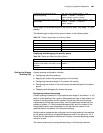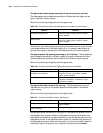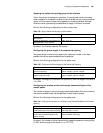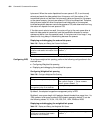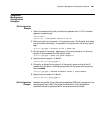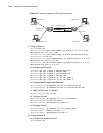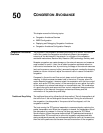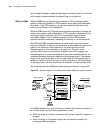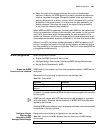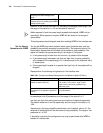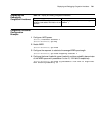
50
CONGESTION AVOIDANCE
This chapter covers the following topics:
■ Congestion Avoidance Overview
■ WRED Configuration
■ Displaying and Debugging Congestion Avoidance
■ Congestion Avoidance Configuration Example
Congestion Avoidance
Overview
The purpose of the congestion avoidance technology is to monitor the network
traffic flow, predict the congestion and effectively prevent the congestion
occurring at the bottleneck of the network. In a number of the congestion
avoidance mechanisms, Random Early Detection (RED) technology is widely used.
Excessive congestion can create damage on the network resource, and measures
must be taken to avoid it. Here, the so-called congestion avoidance refers to a
traffic control mechanism that, by monitoring the usage of the network resources
(such as the queue or memory buffer), removes the network overload by dropping
packets on its own initiative to adjust the network traffic in case of the network
congestion.
Compared to the end-to-end flow control, steam control here has wide-range
meaning, it affects more service steam load in the router. Of course, when the
router discards the packet, it does not reject the cooperation with the flow control
action, such as the TCP flow control, of the source end, so as to adjust the traffic
of the network to a rational load status in a more efficient way. The combination
of a good drop policy and source end flow control mechanism always pursue the
maximization of the network throughput and service efficiency and the
minimization of the packet drop and delay.
Traditional Drop Policy The traditional drop policy utilizes the tail-drop method. The tail-drop applies to all
the traffic flow. It can not distinguish the service level. During the occurrence of
the congestion, the data packet of the queue tail will be dropped, until the
congestion is settled.
The host running the TCP protocol responds to numerous drops by reducing the
packet transmission rate. When the congestion is cleared, the transmission rate of
the data packet is increased. In this way, tail-drop can cause the TCP Global
Synchronization. When the queue drops multiple TCP packets simultaneously, it
causes multiple TCP connections to come into congestion avoidance and slow
startup states simultaneously, and reduces and adjusts the traffic at the same time,
then the traffic peak occurs as the same time as the reduction of the congestion,



